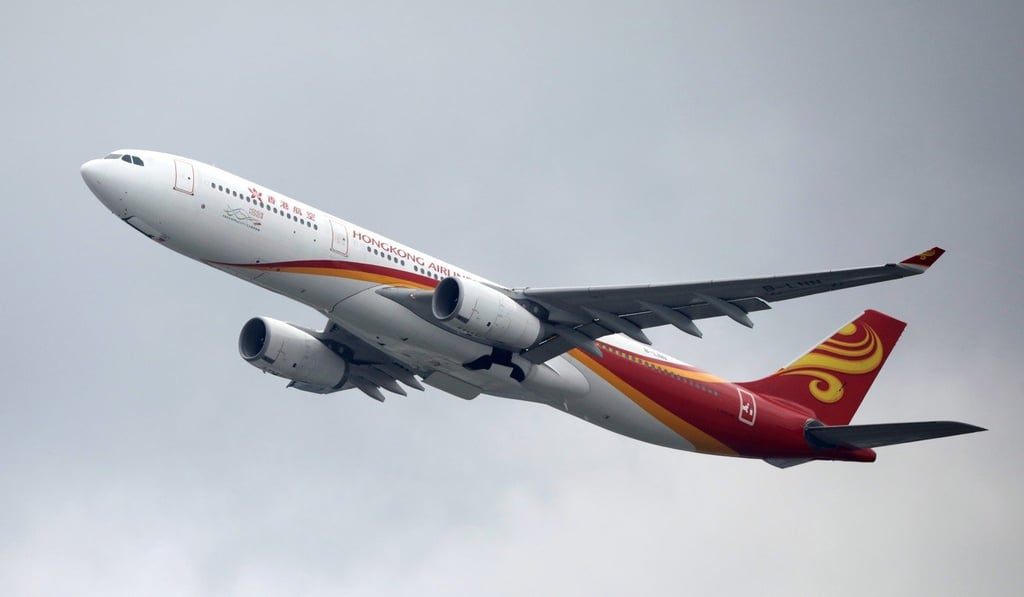Planes stay on the ground and protests bite, as Hong Kong Airlines struggles to beat financial woes
- No solution in sight as thousands cancel, defer trips to Hong Kong because of protests
- It has cut or reduced flights to 11 destinations, including Tokyo, Seoul and Osaka

Up to a quarter of Hong Kong Airlines’ (HKA) 39 planes are no longer flying, shining a light on the scale of pressure from authorities to shrink its operations and cut losses.
At Hong Kong International Airport (HKIA), several of its aircraft can be seen idle, with their engines covered. The city’s third largest airline said aircraft that are out of action are being returned to leasing companies, grounded, put under maintenance, or being transferred to other airlines, without specifying how many.
But experts doubt that route and schedule cuts are enough to improve the airline’s financial issues, as worsening public perceptions keep customers away.
“I don’t recall airlines being able to shrink themselves into profitability, outside the equivalent of bankruptcy,” said Henry Harteveldt, principal at Atmosphere Research, a United States-based travel analysis firm.
“As HKA cuts its route network and flight frequencies, it further reduces its viability and utility to connecting passengers. For example, it may no longer offer the most convenient schedules. The airline’s actions practically hand customers to its competitors.”
